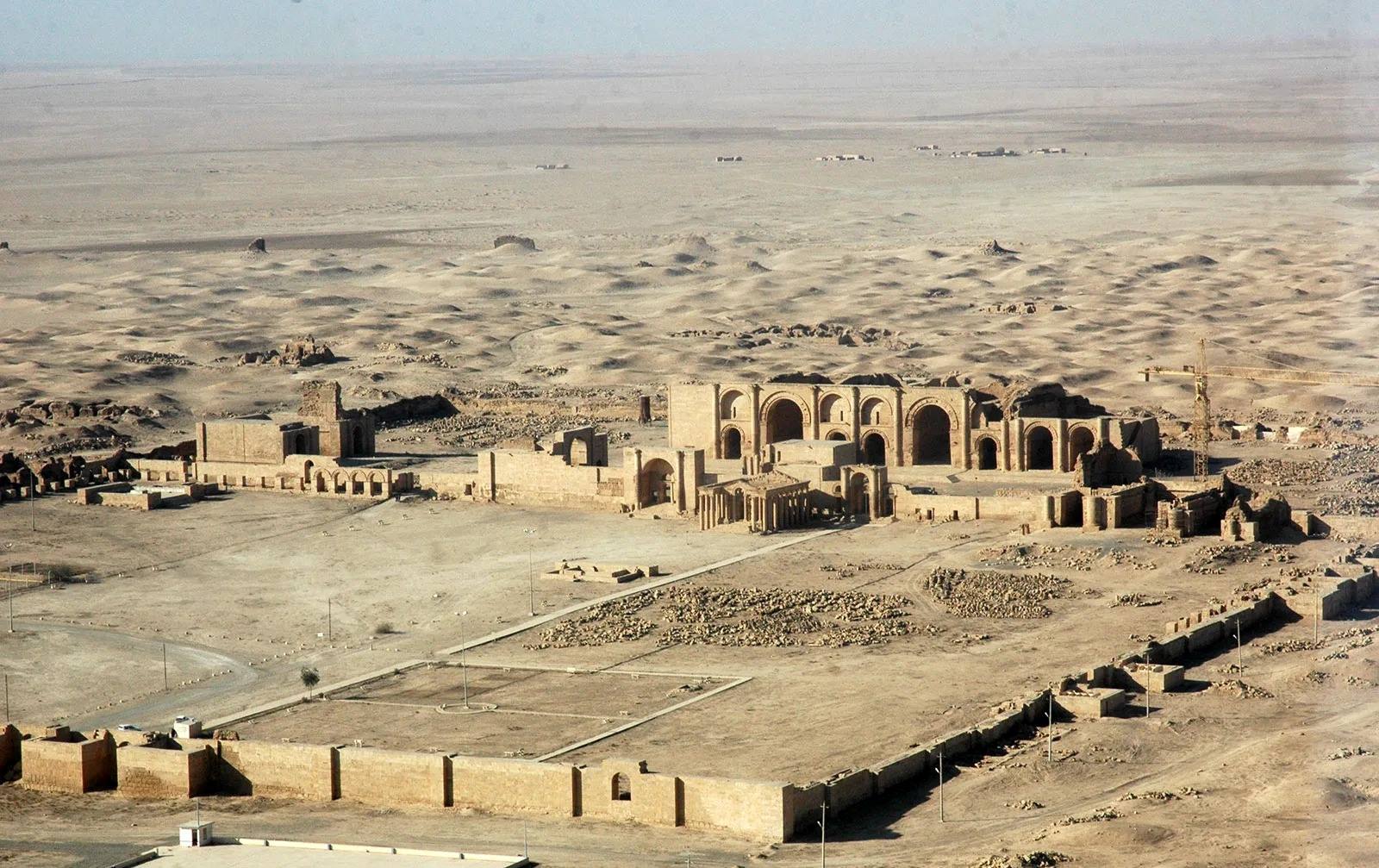
Nisa Ancient City is a captivating historical site that encompasses rich cultural heritage and ancient history. Located in present-day Turkmenistan, Nisa Ancient City holds a prominent place in Central Asian archaeology and is recognized as a UNESCO World Heritage site. This ancient city was the capital of the Parthian Empire, a significant power in the region from the 3rd century BC to the 3rd century AD.
While Nisa Ancient City may be lesser-known compared to other ancient sites like Machu Picchu or the Pyramids of Giza, it is not without its intriguing and surprising facts. From its architectural wonders to its historical significance, Nisa Ancient City unveils hidden tales and secrets waiting to be explored.
In this article, we will dive into 16 surprising facts about Nisa Ancient City that will transport you back in time and give you a deeper understanding of its historical significance.
Key Takeaways:
- Nisa Ancient City, a UNESCO World Heritage Site, was the capital of the Parthian Empire and a hub of cultural exchange. Its architectural marvels and unique burial practices offer a fascinating glimpse into ancient civilization.
- Ongoing archaeological discoveries at Nisa Ancient City continue to unveil its rich history, including its role as a center for Mithraism and its connections to the Silk Road. Explore this ancient marvel to step back in time and unlock its mysteries.
Ancient Capital
Nisa Ancient City served as the capital of the Parthian Empire, one of the most powerful and influential empires of ancient times. It was the political, economic, and cultural center of the Parthians.
UNESCO World Heritage Site
In recognition of its historical significance, Nisa Ancient City was designated as a UNESCO World Heritage Site in This prestigious status highlights the exceptional universal value of the site.
Origins in the 3rd Century BC
The city of Nisa dates back to the 3rd century BC, making it over two thousand years old. It flourished during the rule of the Parthians and played a pivotal role in their empire.
Architectural Marvels
Nisa Ancient City boasts impressive architectural structures, including palaces, temples, fortifications, and residential areas. These ruins provide valuable insight into the advanced engineering and construction techniques of the time.
Mithraism Center
Nisa was a significant center for the worship of Mithra, the ancient Persian god of the sun. Numerous Mithraic temples and altars have been discovered in the ruins, indicating the religious importance of the city.
Unique Cemetery
One of the intriguing aspects of Nisa Ancient City is its unique cemetery. It features underground tombs known as “kurgans,” which were constructed for Parthian royalty and nobility. These elaborate tombs showcase the wealth and status of the ruling class.
Silk Road Connection
Nisa Ancient City served as a vital stop along the ancient Silk Road trading route. Its strategic location contributed to its prosperity and cultural exchange between different civilizations.
Destruction by Earthquakes
Nisa Ancient City faced devastating earthquakes throughout its history, leading to the destruction of many structures. These seismic events have left their mark on the architectural remnants of the city.
Significant Hellenistic Influence
The Parthian Empire had close interactions with the Hellenistic world, resulting in the infusion of Greek artistic and architectural elements in Nisa Ancient City. This cultural blend is evident in the remains of the city.
Eastern and Western Influences
Nisa Ancient City was a melting pot of Eastern and Western influences, with traces of Persian, Greek, Roman, and Central Asian cultures found in its artifacts and architecture.
Royal Palaces
The city housed lavish royal palaces that were adorned with intricate decorations, including colorful frescoes and ornate carvings. These palaces served as the residence for the Parthian kings and queens.
Astronomical Observatory
Archaeological excavations at Nisa Ancient City have revealed the existence of an ancient astronomical observatory. This discovery suggests the Parthians’ interest in studying celestial bodies and their connection to religious beliefs.
Cultural Crossroads
Nisa Ancient City played a crucial role in connecting different cultures and civilizations. It facilitated the exchange of ideas, trade, and artistic influences, contributing to a rich and diverse cultural landscape.
Unknown Language
The Parthians, who built and inhabited Nisa Ancient City, left behind inscriptions and writings in an unknown language. Deciphering these ancient texts remains a mystery, adding an air of intrigue to the site.
Burial Practices
The Parthians practiced unique burial rituals, with the deceased being laid to rest in elaborate tombs along with their belongings and valuables. These burials provide valuable insights into the funerary customs of the time.
Ongoing Archaeological Discoveries
Archaeological excavations at Nisa Ancient City are still ongoing, uncovering new findings and shedding light on the city’s rich history. These ongoing discoveries contribute to our understanding of the Parthians and their remarkable accomplishments.
Exploring Nisa Ancient City is like stepping back in time and unraveling the mysteries of an ancient civilization. From its royal palaces and temples to its burial practices and Hellenistic influences, the city has captivated archaeologists and history enthusiasts for centuries. Visit Nisa Ancient City and experience the allure of this remarkable UNESCO World Heritage Site.
Conclusion
In conclusion, Nisa Ancient City is a fascinating destination with its rich historical significance and archaeological wonders. From the impressive fortress walls to the exquisite architectural details, Nisa Ancient City offers a glimpse into the ancient Parthian civilization. The city’s strategic location and role as a cultural and political center make it an important archaeological site and a UNESCO World Heritage Site. Whether you are a history enthusiast or simply appreciate stunning ancient landmarks, Nisa Ancient City is definitely worth a visit.
FAQs
Q: What is Nisa Ancient City?
Nisa Ancient City is an archaeological site located in Turkmenistan. It was the capital of the Parthian Empire, a powerful civilization that existed from the 3rd century BC to the 3rd century AD.
Q: How old is Nisa Ancient City?
Nisa Ancient City has a history of over 2,000 years. It was first established in the 3rd century BC and remained an important city until its decline in the 3rd century AD.
Q: What can I see in Nisa Ancient City?
In Nisa Ancient City, you can see the remains of the fortress walls, residential buildings, temples, and royal structures. The site also features intricate architectural details and artifacts that offer insight into the daily life and culture of the Parthian Empire.
Q: Is Nisa Ancient City a UNESCO World Heritage Site?
Yes, Nisa Ancient City is a designated UNESCO World Heritage Site. It was recognized for its outstanding universal value as a well-preserved example of an ancient Parthian city.
Q: Can I visit Nisa Ancient City?
Yes, Nisa Ancient City is open to visitors. There are guided tours available that provide information about the site’s history and significance. However, it is important to respect the archaeological remains and follow any rules or restrictions in place to preserve the site.
Nisa's fascinating history will leave you craving more ancient wonders. Uncover the secrets of Samarra, a city steeped in archaeological marvels. Immerse yourself in Turkmenistan's rich tapestry of culture and tradition. Journey to Tiwanaku, where ancient civilizations left their indelible mark on history. Each destination holds a wealth of surprises waiting to be explored.
Was this page helpful?
Our commitment to delivering trustworthy and engaging content is at the heart of what we do. Each fact on our site is contributed by real users like you, bringing a wealth of diverse insights and information. To ensure the highest standards of accuracy and reliability, our dedicated editors meticulously review each submission. This process guarantees that the facts we share are not only fascinating but also credible. Trust in our commitment to quality and authenticity as you explore and learn with us.


